 |
The survey team members were delighted to find the ancient tea tree. |
The first tea tree
In the previous article, the survey team crossed mountains and forests to find the first ancient tea tree. Artisan Nguyen Thi Hai, President of Dai Tu Tea Association, President of the Board of Directors of La Bang Tea Cooperative, who participated in a trip to find ancient tea trees in January 2025, shared: On the trip earlier this year, we went up to the top of the mountain to find the ancient tea tree, but this time on the way we discovered another ancient tea tree. This tea tree was found for the first time. And with its location far from the boundary marker of the two provinces of Thai Nguyen - Tuyen Quang, this is determined to be the closest ancient tea tree to La Bang commune to date.
After discovering the tea tree, Mr. Truong Thuy Luan, Vice President of Dai Tu Tea Association, representative of Thai Nguyen Adventure tourism brand, used GPS to determine the location. Mr. Luan said: There are still about a hundred meters of forest road to reach the border between Thai Nguyen and Tuyen Quang provinces. This area belongs to La Bang commune, Dai Tu district and is the eastern bank of Tam Dao range. That means this tree belongs to Thai Nguyen province.
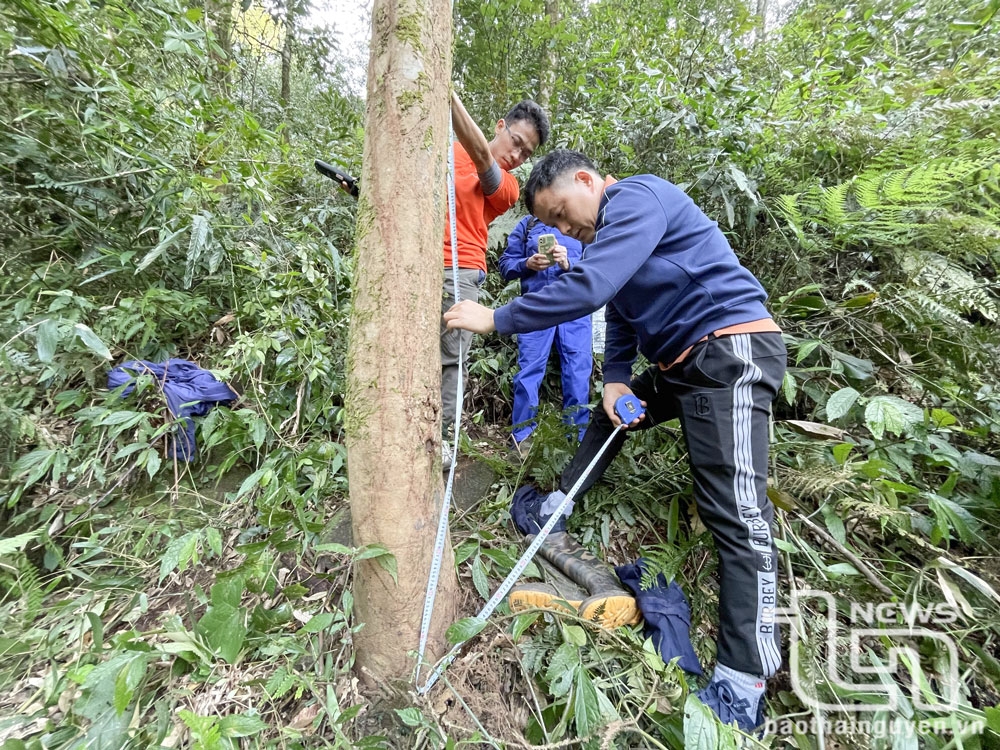 |
Associate Professor, Dr. Ha Duy Truong measures the size of the first discovered tea tree. |
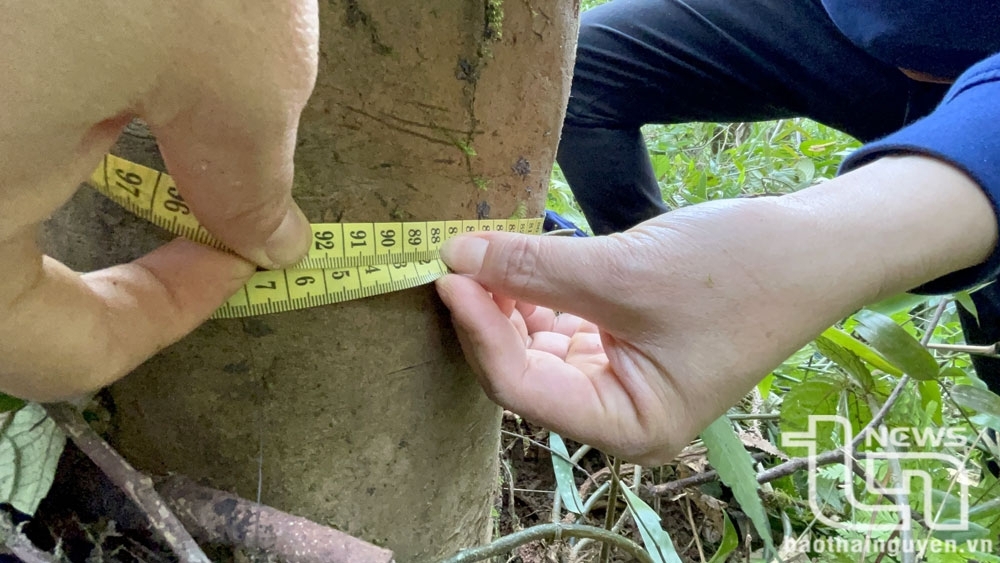 |
The first discovered ancient tea tree had a base circumference of 88cm. |
After examining the tea tree, Associate Professor, Dr. Ha Duy Truong assessed: We took leaf samples, branch samples, and bud samples and initially determined that they were very similar to a Shan tea strain. In particular, the tea tree's bamboo shoots are very similar to Shan tea bamboo shoots. This first discovered tea tree is 12-13m tall, the circumference of the base measured at 20cm from the base is 88cm, estimated to be over 150 years old.
Shan tea variety
Continuing up to the top of Tam Dao mountain, the survey team found a population of ancient tea trees. Associate Professor, Dr. Ha Duy Truong said: The team found 18 trees with a base circumference of about 80 to 150cm. Through leaf and tea bud samples, we assessed that all these trees are a tea line, leaning towards the very precious Shan tea line, possibly the green or white Shan tea variety that usually grows at an altitude of more than 1,200m above sea level. However, to determine which Shan tea variety this tea tree population belongs to, the genome must be sequenced for the most accurate assessment.
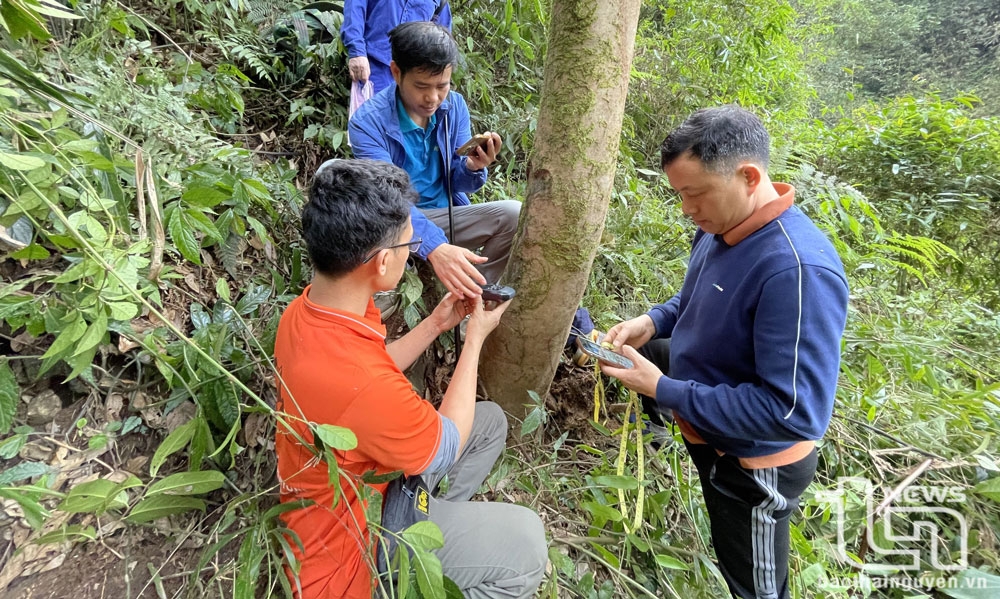 |
Scientists and tea experts GPS locate ancient tea trees |
Also according to Associate Professor, Dr. Ha Duy Truong, regarding the age of the tree, through survey and measurement of some indicators, especially the circumference of the base, for trees with a circumference of 100-150cm, the age of the tree is over 200 years old; trees with a circumference of over 80cm, the age of the tree is over 150 years old. Thus, the initial feeling is that most of the discovered tea trees are over 200 years old, but to accurately assess the age of the tree, it is necessary to use the scientific method of growth drilling to drill to the center of the tree trunk to determine the age.
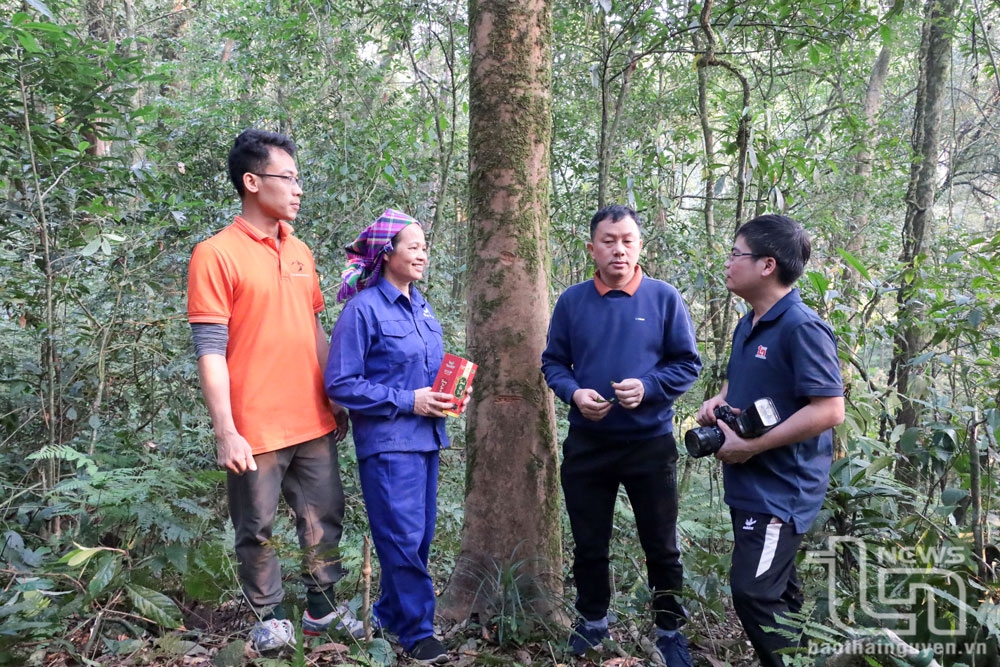 |
Reporter of Thai Nguyen Newspaper, scientist and tea expert next to an ancient tea tree |
| In Vietnam, Shan tea is now often an ancient tree, found in many provinces such as Ha Giang, Bac Kan, Dien Bien, Lao Cai, Yen Bai. The tree grows several meters to tens of meters high, and when picking tea, one must climb the tree. In many places, there are tea trees that several people cannot hug, and are hundreds to thousands of years old. Shan tea often lives in areas with an altitude of more than 1,200m, cool climate, and covered in clouds. |
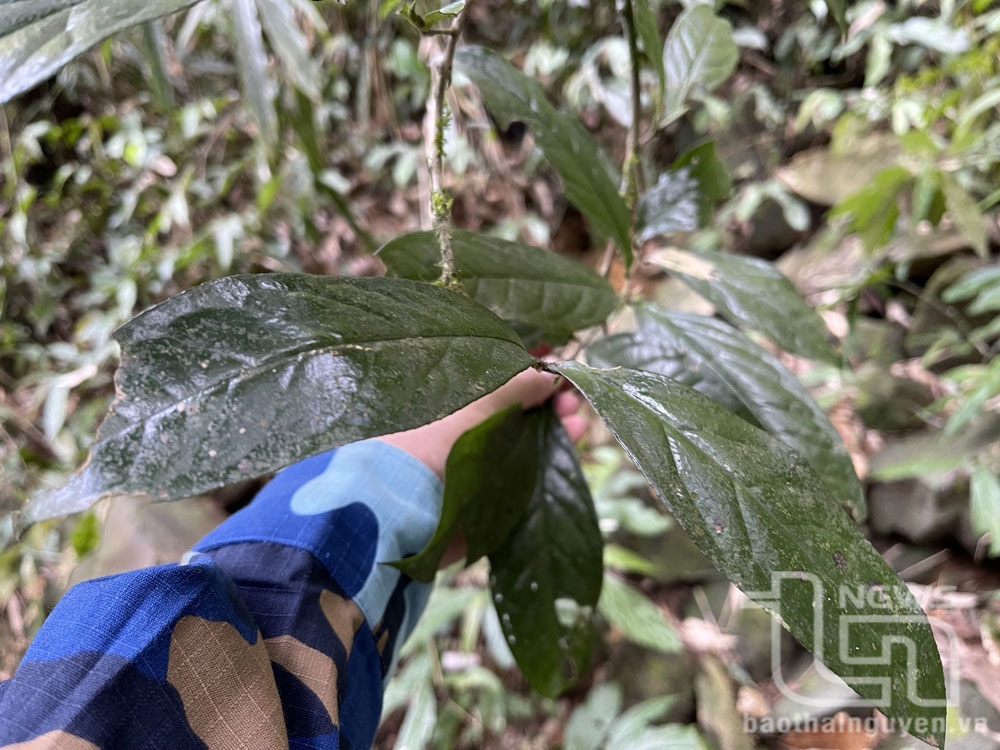 |
Ancient tea leaves |
Continuing the survey, the group found that the tea buds, also known as tea shoots, have a distinctive shape - similar to the shape of a dragon's claw. Artisan Nguyen Thi Hai said: We feel that this is very valuable Shan Mong Rong tea.
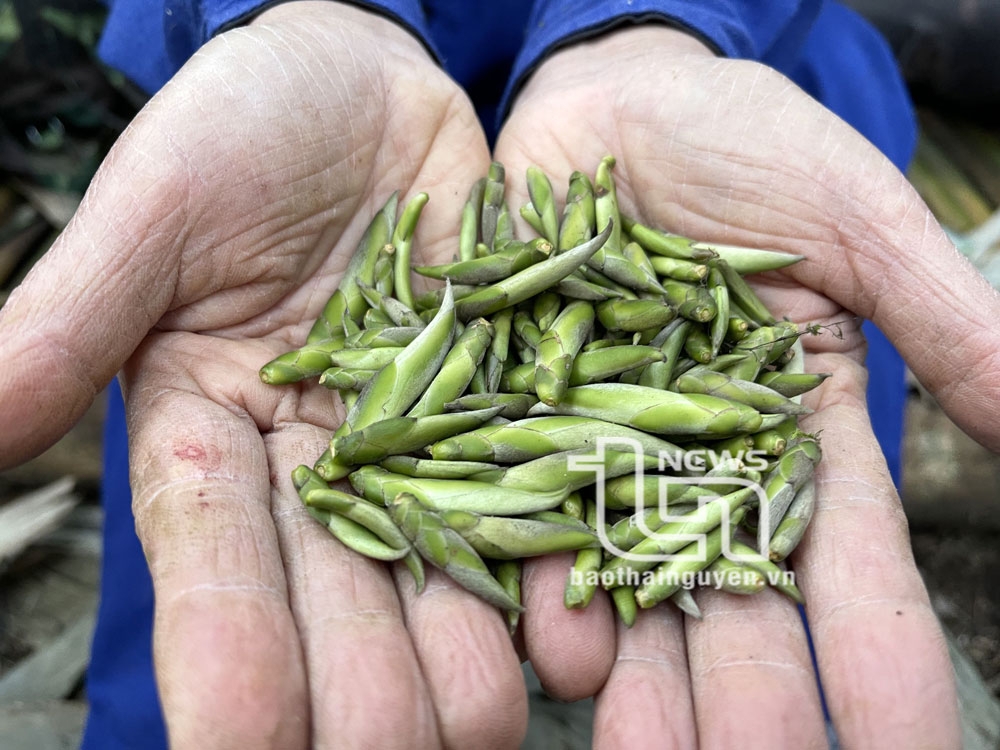 |
Many people in the survey team believe that this is very precious Shan Mong Rong tea. In the photo: Buds or bamboo shoots of the ancient tea tree |
 |
Bamboo shoots are peeled off and have young buds inside. |
| Dragon Claw is a famous tea. The reason it is called Dragon Claw is because it looks like a dragon's claw. In Vietnam, this Shan tea grows sporadically in some areas, mostly in Ha Giang province, at an altitude of over 1,300m, with an air temperature below 10 degrees Celsius in winter and below 20 degrees Celsius in summer. Shan tea buds are harvested once a year in winter. With these conditions, Dragon Claw tea is fully accumulated with nutrients, providing health benefits, helping to prevent many diseases, and is a strong antioxidant... |
Nui Bong Ancient Tea - Tam Dao: 2 varieties with different morphological characteristics
While conducting research on ancient tea trees on the top of Bong mountain, Minh Tien commune, Dai Tu district, when seeing this ancient tea tree on the top of Tam Dao, Associate Professor, Dr. Ha Duy Truong noticed two different tea varieties in terms of leaf morphology.
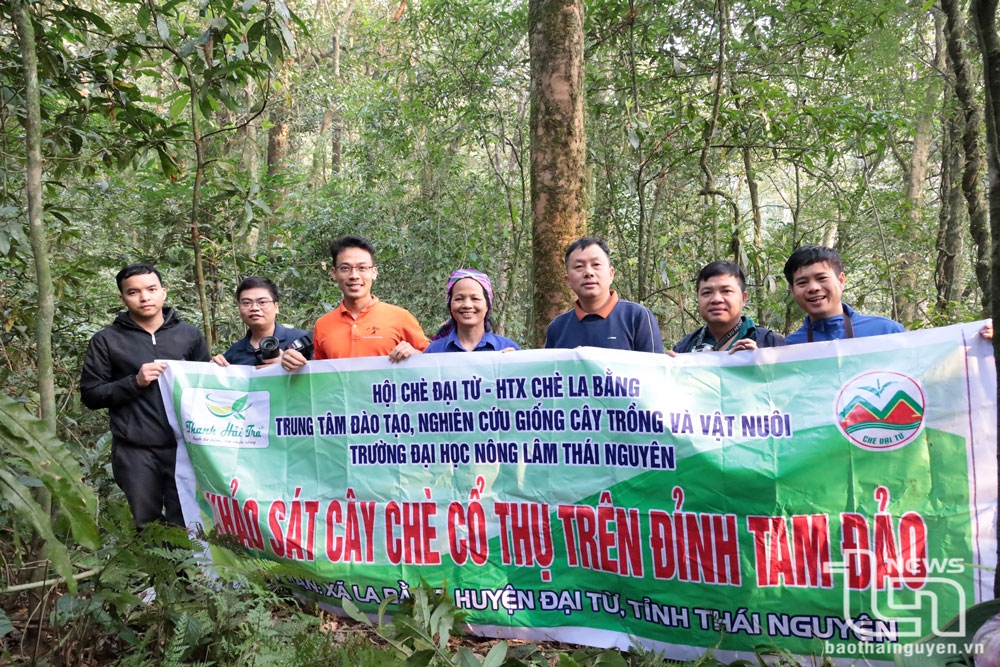 |
The survey team took a photo next to an ancient tea tree on Tam Dao mountain in La Bang commune. |
Assoc. Prof. Dr. Ha Duy Truong analyzed: The newly discovered ancient tea on the top of Tam Dao has sunken serrated leaves, the tea buds are shaped like bamboo shoots and are covered by a hard shell, also known as bamboo shoots, while Bong mountain tea has clear and sparse serrated teeth, forming normal tea buds. The tea leaves on Tam Dao mountain have thick leaves, while Bong mountain tea has long, thin leaves and pointed tips. Initially, I thought the two varieties were different in morphology, however, to determine the most accurate difference, it is necessary to sequence the gene source.
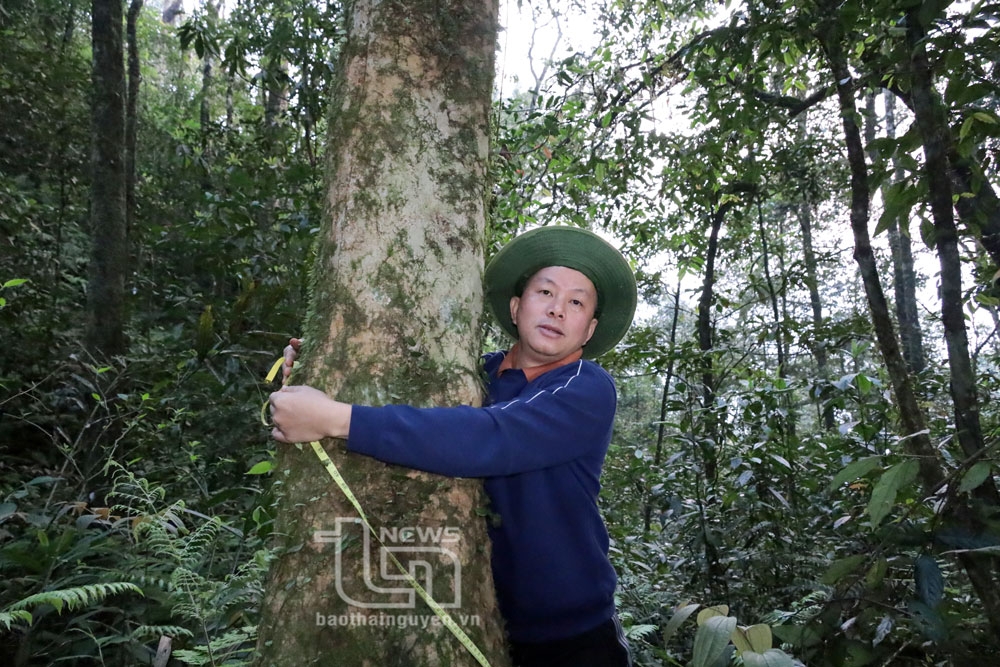 |
The bark of an ancient tea tree on Tam Dao mountain is pinkish red. In the photo: Associate Professor, Dr. Ha Duy Truong next to an ancient tea tree |
Artisan Nguyen Thi Hai added: I also surveyed the two tea regions of Bong Mountain and Tam Dao Mountain and found that the tea trees in these two regions are different. The tea trees in Tam Dao Mountain have buds, very large tea buds, in the bag of small buds, looking different from the tea trees in Bong Mountain which have buds like normal tea. Looking at the tree trunk, we see that the outside of the tea trees in Tam Dao Mountain has a red-pink bark, while the tea trees in Bong Mountain have a white-green color.
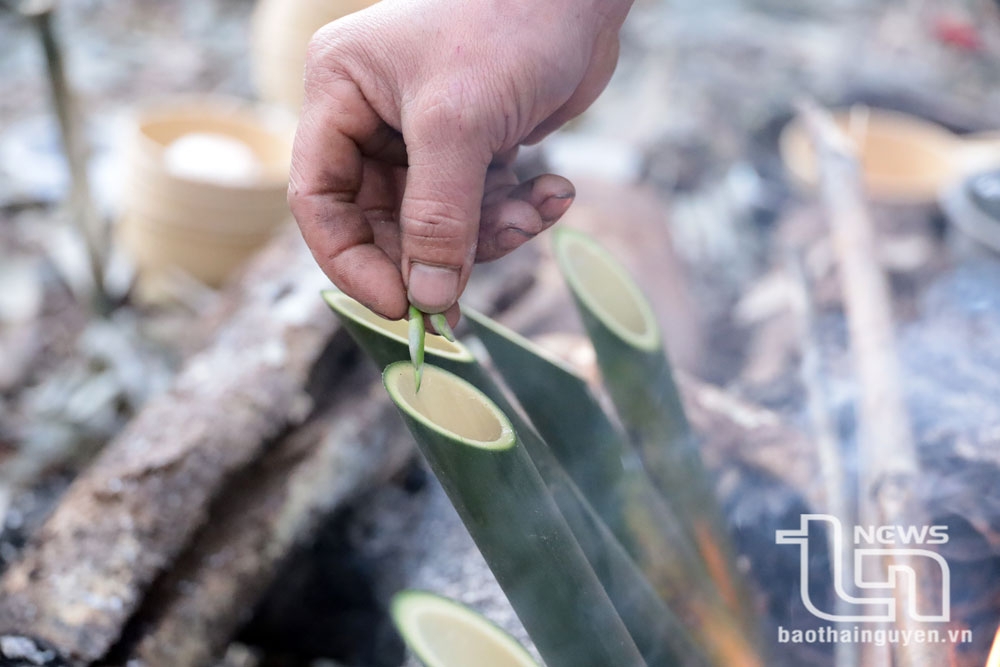 |
The survey team used bamboo tubes to brew ancient tea in the misty Tam Dao peak. |
Scientists and tea industry experts have both stated that the ancient tea tree population on Tam Dao mountain top has different leaf and bud morphology compared to Bong mountain, so scientific research is needed soon to determine the breed and genetic source of the tree. Previously, the Scientific Council of Thai Nguyen province approved the project "Research, conservation and development of genetic resources of ancient tea trees on Bong mountain, Minh Tien commune, Dai Tu district, Thai Nguyen province". Research activities are underway to determine the genetic source of ancient tea trees on Bong mountain.
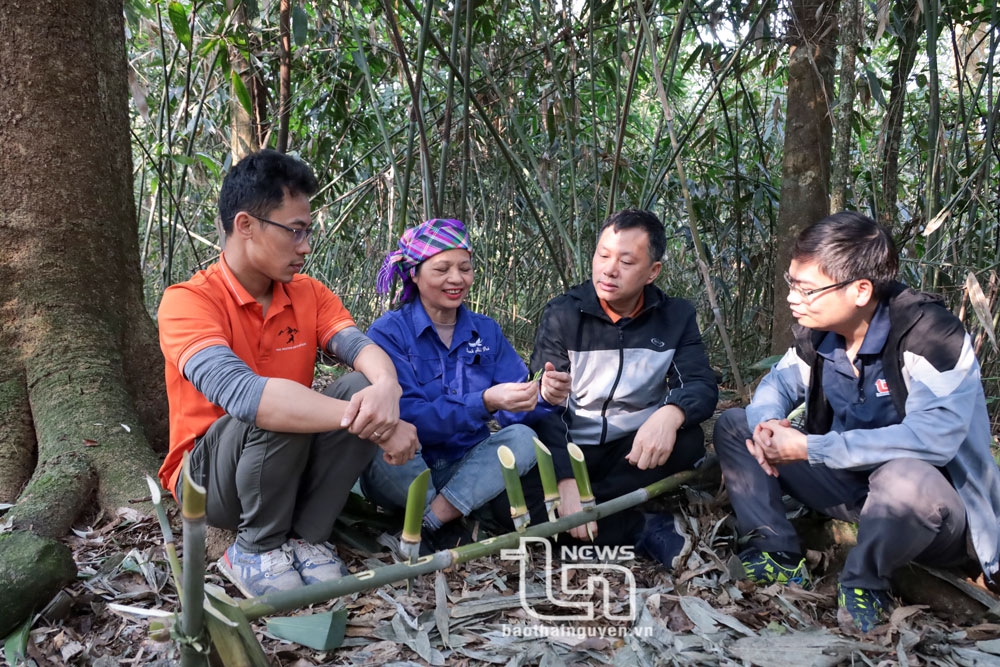 |
Members of the survey team tasted tea and discussed the flavor of tea made from ancient tea tree shoots. |
With the discovery of the ancient tea tree population on Tam Dao mountain, to have the most accurate conclusion, scientists and tea experts suggest that Thai Nguyen province soon have a scientific research topic on the genetic resources of ancient tea trees on Tam Dao peak in Thai Nguyen province. On that basis, the tree population will soon become a heritage tree to preserve and promote the precious value of tea trees.
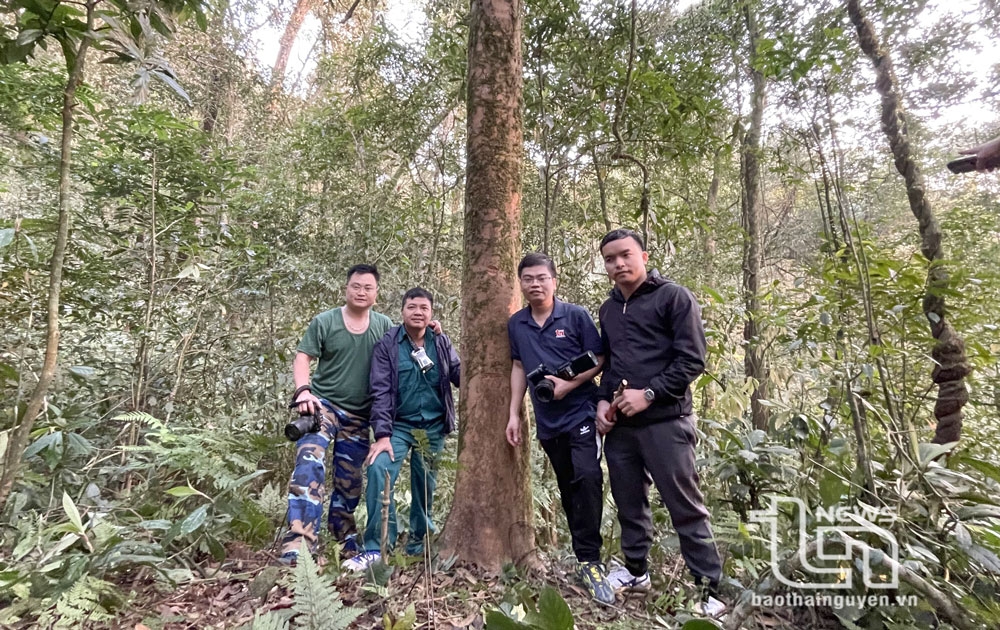 |
Group of reporters and editors of Thai Nguyen Newspaper next to an ancient tea tree |
According to many scientists, the discovery of an ancient tea population on Tam Dao Mountain, in La Bang Commune (Dai Tu), is of great significance. This is a premise for research to evaluate the history of tea trees in Thai Nguyen.
Source: https://baobinhphuoc.com.vn/news/9/170854/ven-man-bi-an-che-co-nui-tam-dao-thuoc-dia-phan-thai-nguyen-ky-2-giong-che-shan-quy








































Comment (0)